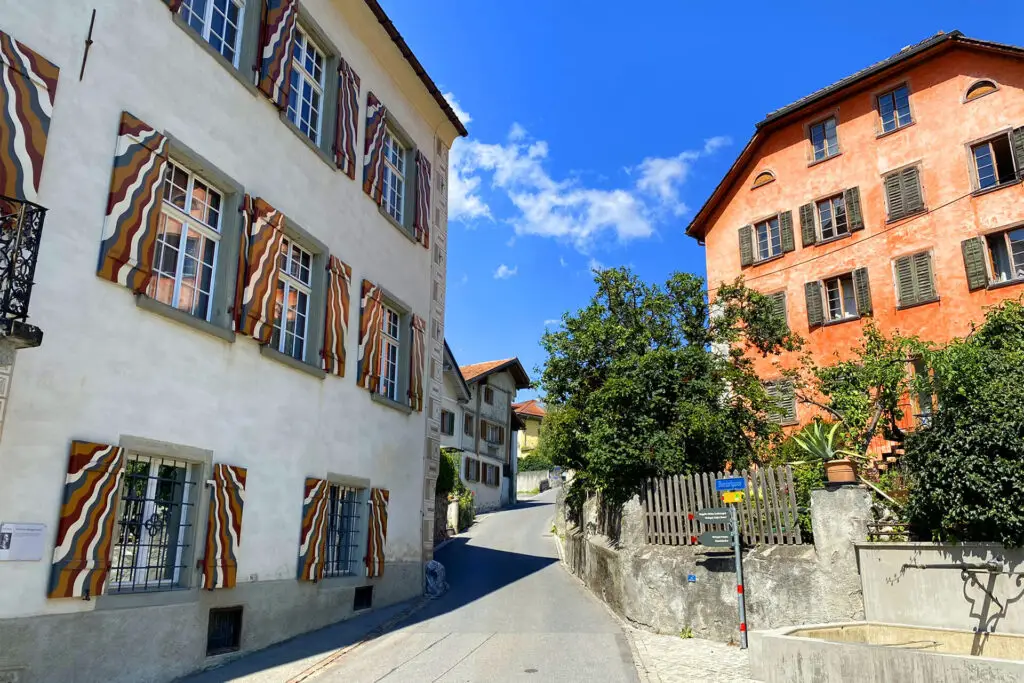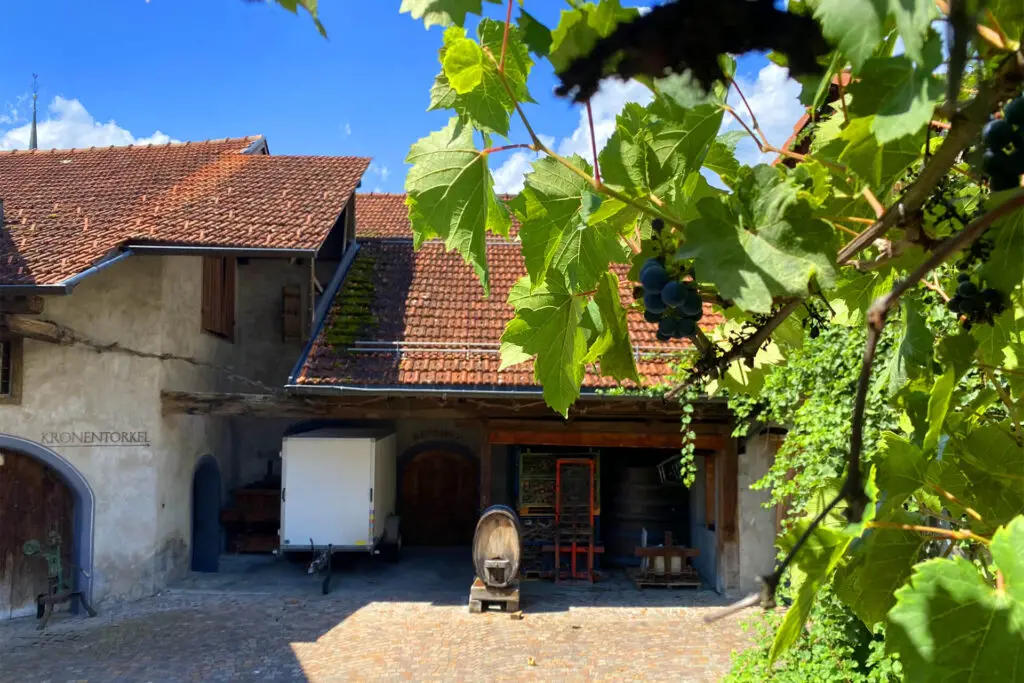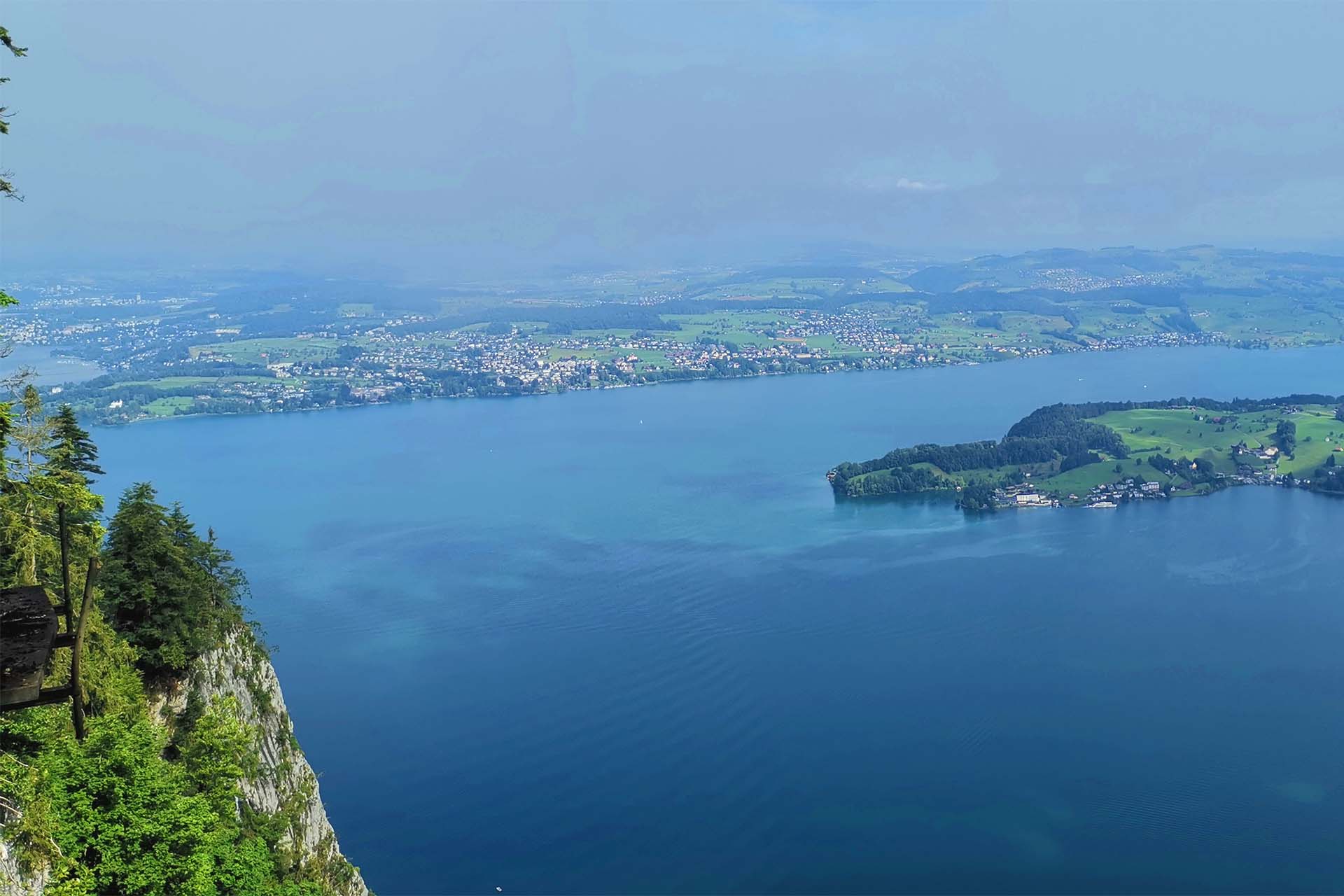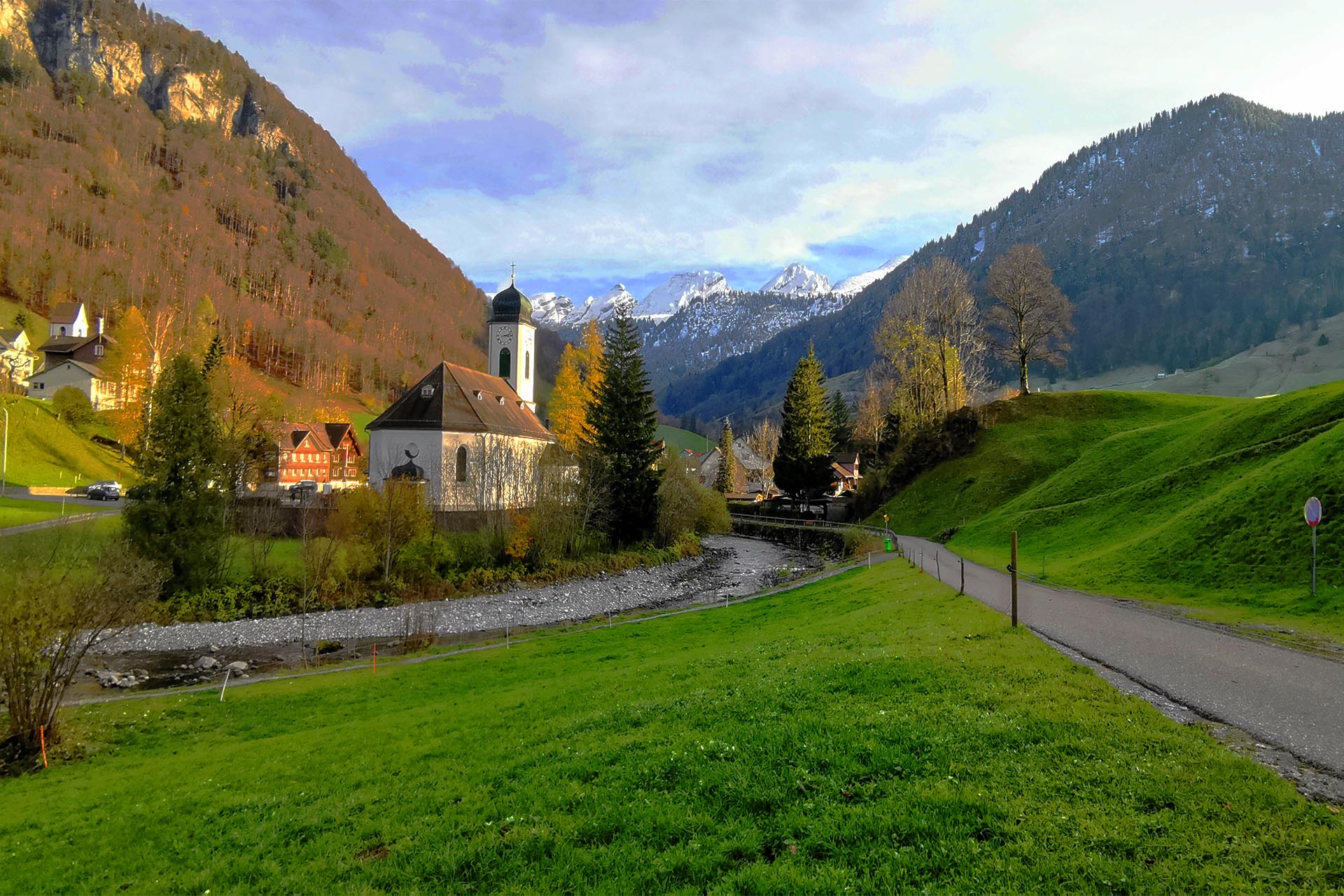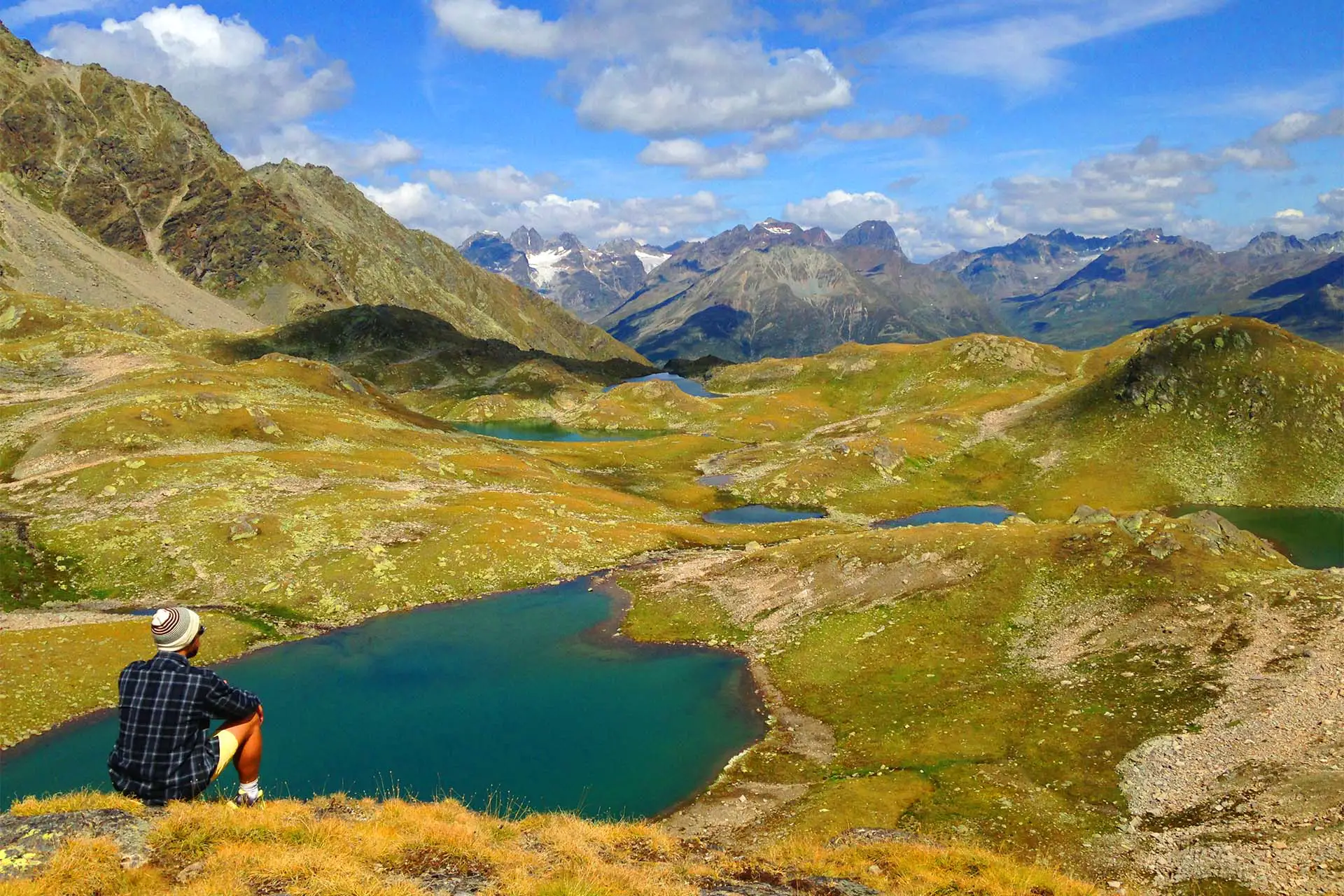Grand Tour of Switzerland: 12 TOP insider tips
The Grand Tour of Switzerland has a lot to offer. Here we have selected 12 dream places for you where you should plan a little more time. All of the places mentioned belong to the “Federal Inventory of Swiss Heritage Sites” and are a special highlight on the Grand Tour of Switzerland.
In collaboration with Switzerland Tourism, text, and pictures by Marc Gottwald
The Grand Tour of Switzerland in a nutshell
With 5 Alpine passes, 22 lakes, 1600 kilometers of driving, and cultural and scenic diversity, the Grand Tour of Switzerland is one of the highlights of discovering and getting to know Switzerland.
If the time is a bit too short, the tour can also be done in stages. On Switzerland Tourism’s homepage, you can find everything about the tour.
Now we present you our 12 dream places:
Flüeli-Ranft, OW
Flüeli-Ranft is a small village in the canton of Obwalden surrounded by imposing mountains and is a true place of power. In addition to the incredible beauty of the village, peace, quiet, and many chapels and churches are directly noticeable. In the 15th century, Flüeli-Ranft was the place of work of the Swiss national Saint Niklaus von Flüe, also known as Brother Klaus. Accordingly, the village is still a place of pilgrimage and a great tip on the Grand Tour of Switzerland.
A walk in the village is highly recommended. Furthermore, the church and Brother Klaus Chapel should be visited. By the way, Brother Klaus lived in this chapel for the last 19 years.
Another eye-catcher in Flüeli-Ranft is the Art Nouveau Hotel Paxmontana, built-in 1896 as a spa hotel. The hotel has 83 rooms and is a listed building, while there is also a restaurant for hungry people.
Those who like hiking will get their enjoyment in Flüeli-Ranft. Huge hiking trail boards are waiting for hiking enthusiasts. One of the highlights is the hike to the Älggialp, the geographical center of Switzerland. It takes about 6 hours. A part of the path is an alpine hiking trail, which only experienced hikers can do.
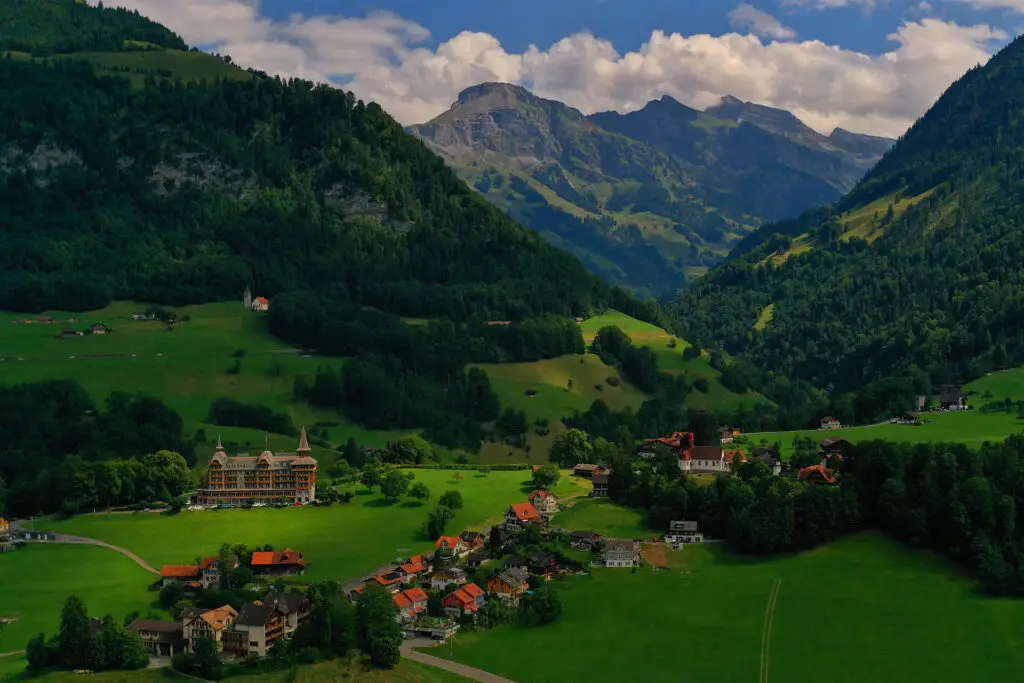
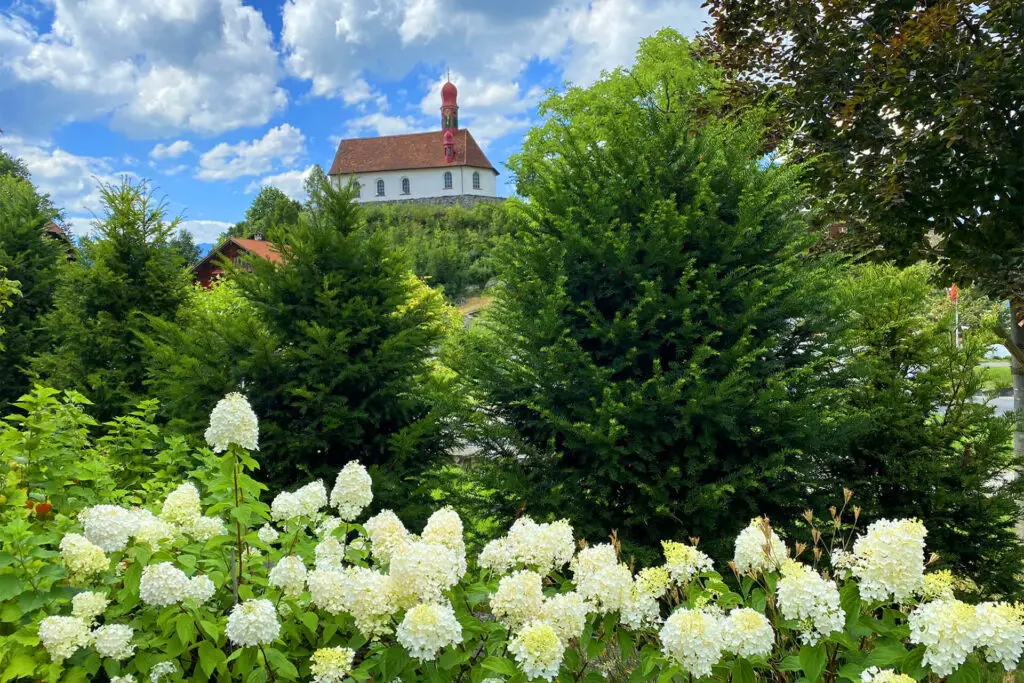
Werdenberg, SG – Smallest city in Switzerland
What is the name of the smallest city in Switzerland? Yes, exactly, we already have the answer; it is Werdenberg. Depending on the source, between 45-60 inhabitants live in Werdenberg. Although a city in Switzerland must, in principle, have more than 10,000 inhabitants, a historical city still count as a “city.” And so it is with Werdenberg.
The idyllic village has just 34 houses and is the oldest wooden settlement in Switzerland—the homes date from the 15th to the 17th century. In addition, on the city hill stands imposingly a castle built in the 13th century. Because the castle is now a museum, it is open to the public from Tuesday to Sunday from 10 am to 5 pm.
What I particularly like and what makes it one of the highlights of the Grand Tour of Switzerland is the picturesque cityscape with the preserved houses, the tranquility, and the details with flowers and vines. Likewise, the lake in front of the medieval town is the perfect photo motif. It can be circumnavigated in about 20 minutes in a leisurely walk.

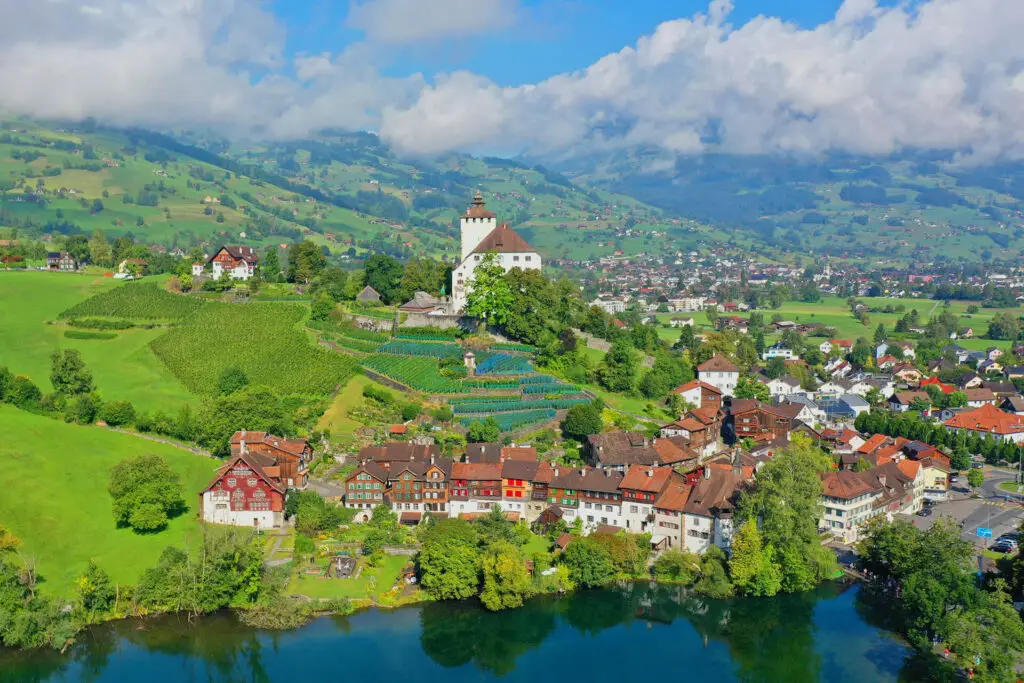
Saillon, VS – the smallest vineyard in the world and a highlight along the Grand Tour of Switzerland
On the way to Saillon, one notices the many fruit and vegetable plantations. Besides grapes and various other fruits, there are pears, apples, and especially apricot trees. In summer, you can buy apricots everywhere from the farmers. Also omnipresent are the wine producers. Every few kilometers, you can see a building that invites you to a wine tasting.
The picturesque medieval city of Saillon also sits proudly on a hill surrounded by vineyards and mountains. In the 13th century, the Savoy built and fortified the core. If you stroll through the alleys in summer, you will find a well-attended restaurant. Otherwise, you will also encounter peace in this beautiful place.
Did you know that Saillon has the smallest vineyard in the world? With only 1.6 square meters, a total of 3 grapes are growing. According to Valais Tourism, the owner is Dalai Lama.
Those who ride the Grand Tour of Switzerland usually want a great souvenir photo. For the best photo spot, I recommend walking along the slope of the vineyards to get a good angle. The light is generally better in the morning in summer.

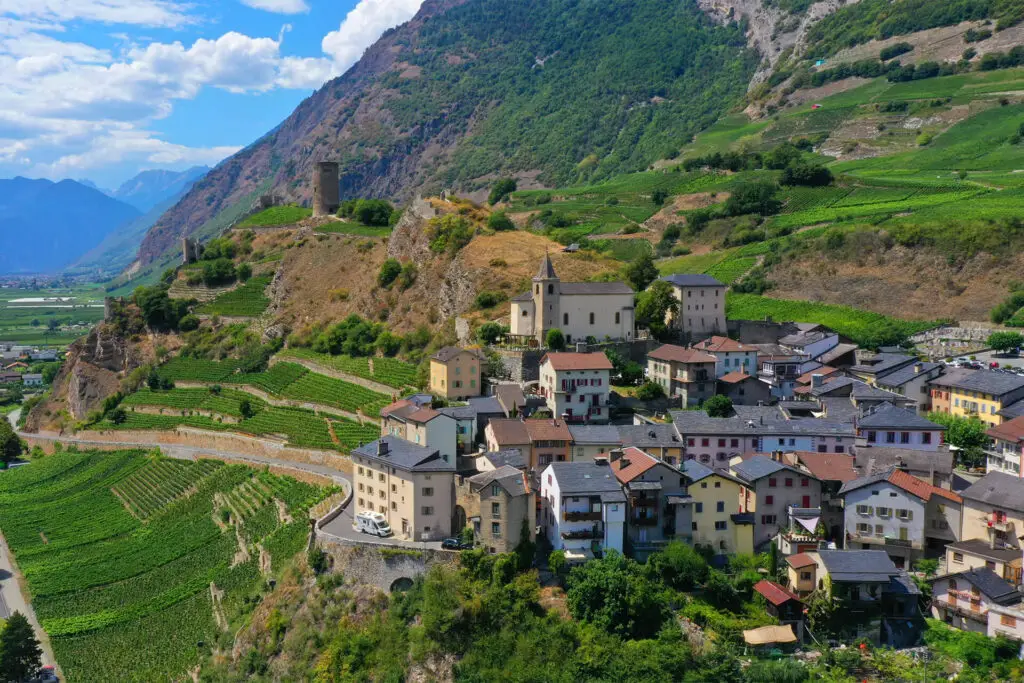
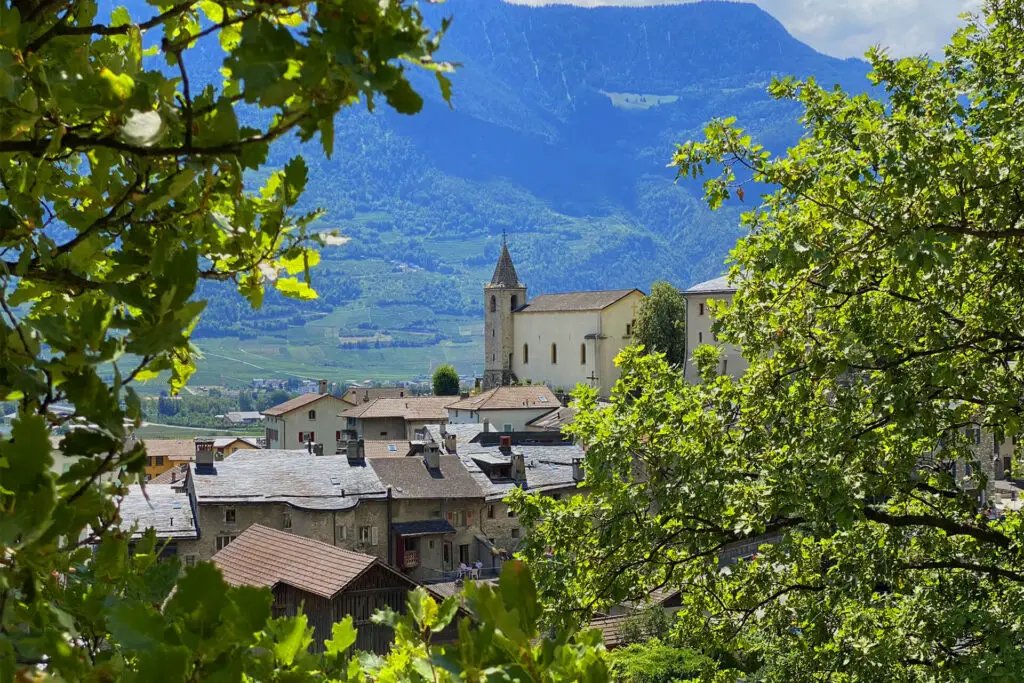
Praz, FR – Perfect place to swim at the Grand Tour of Switzerland
Before I found the place “Praz” on the map, it took me a while. Because in Switzerland, there are various villages which have the same name. Therefore, searching for Praz on Lake Murten in the canton of Fribourg is important.
Praz is a wine-growing village and, as mentioned, is located on Lake Murten. This makes the place a perfect destination along the Grand Tour. If you want to swim in an idyllic, quiet place, you will get your money’s worth. In addition, the numerous wine cellars also offer wine tastings. Praz also has hotels where you can enjoy the evening with a good meal and wine.
A boat trip on Lake Murten is also highly recommended starting in the village. Or how about a hike up Mont Vully, the hill behind Praz? This only takes about an hour and offers fantastic views.
Praz is certainly one of the insider tips of the Grand Tour of Switzerland for wine lovers and connoisseurs.
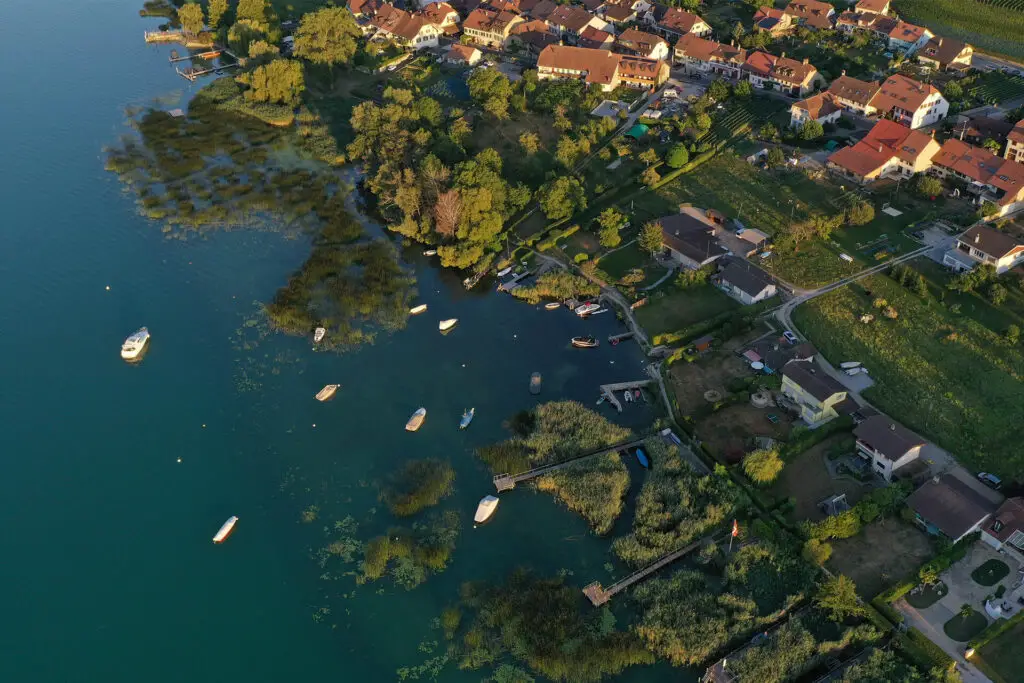
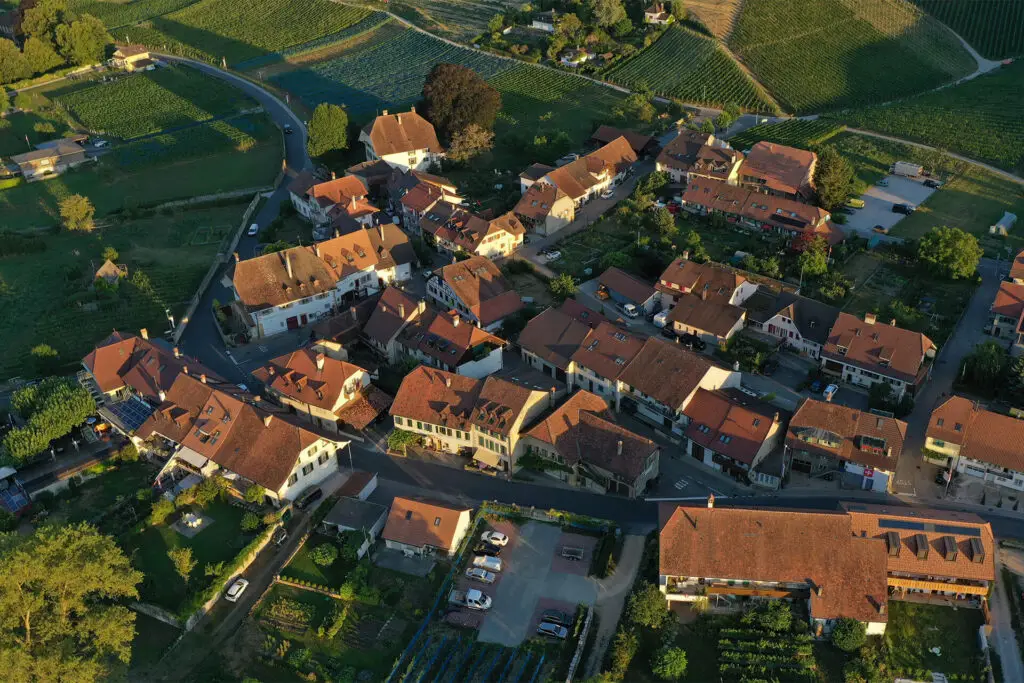
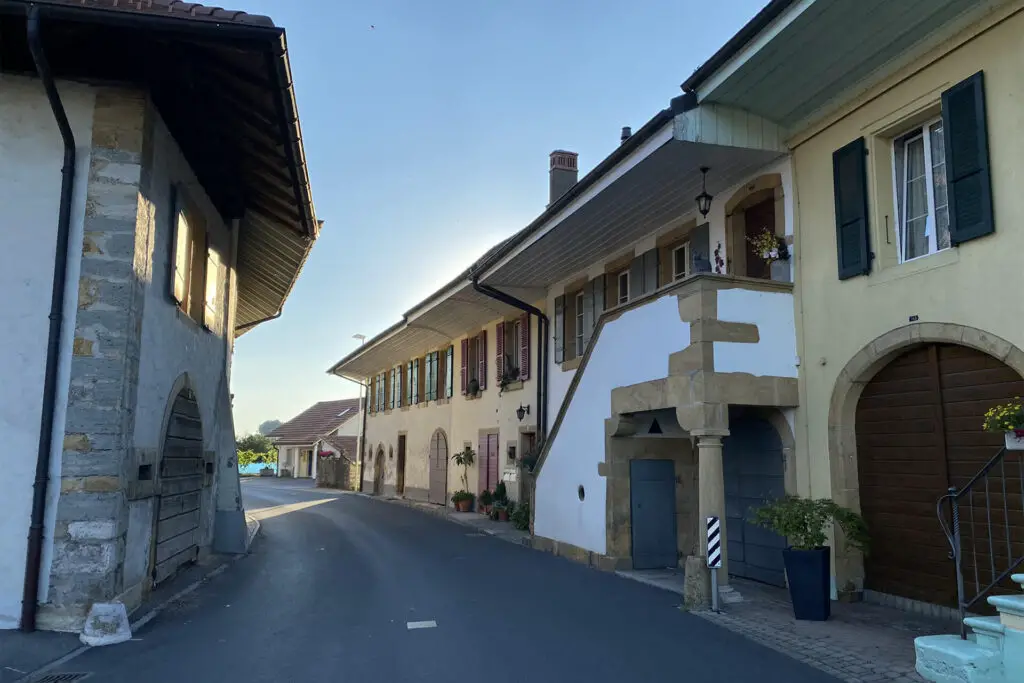
Diessenhofen, TG
Diessenhofen is one of the most beautiful places in the canton of Thurgau and also an insider tip on the Grand Tour of Switzerland. In addition to its beautiful architecture, the small town has a big plus with the Rhine River. Several boat trips from Schaffhausen to Constance dock here every day during the summer.
The name Diessenhofen was mentioned for the first time in the 8th century, at which time the town and its church belonged to the abbey of St.Gallen. In the 15th century, Diessenhofen was forced to join Austria, with the Confederates recapturing the town only 18 years later.
On the other side of the Rhine is already Germany. You can find one of the best photo spots on the hill overlooking the city. An insider tip near Diessenhofen is to visit the village of Unterstammheim in late spring. The indescribably fine scent of roses, combined with the timber-framed houses, quickly enchants the hearts.
Also nearby is the far more famous Stein am Rhein, which is always a highlight on the Grand Tour of Switzerland.
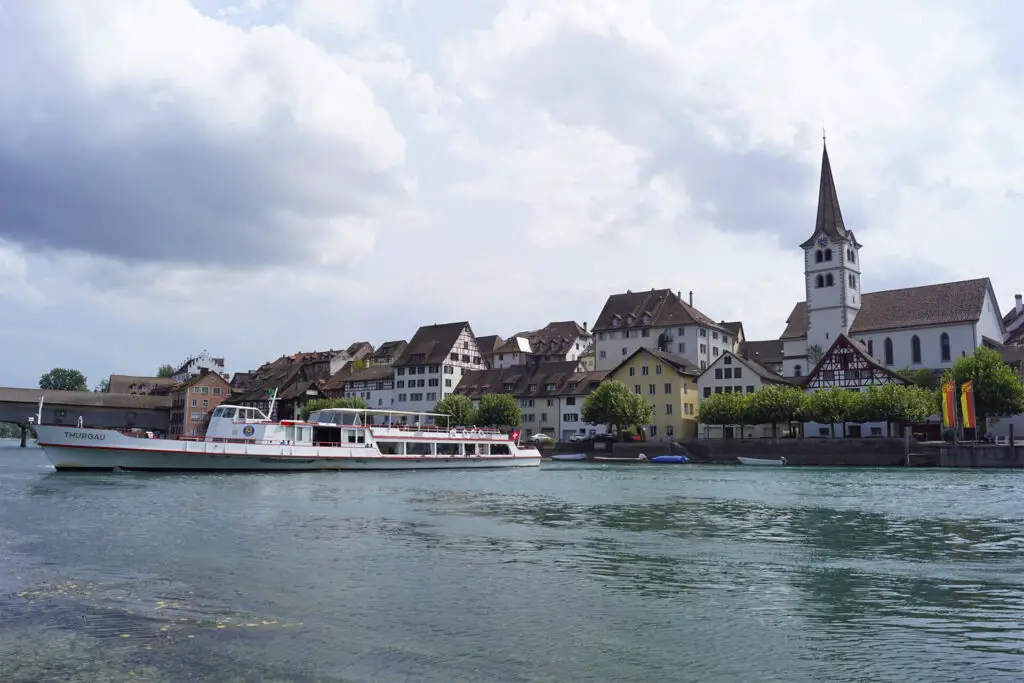
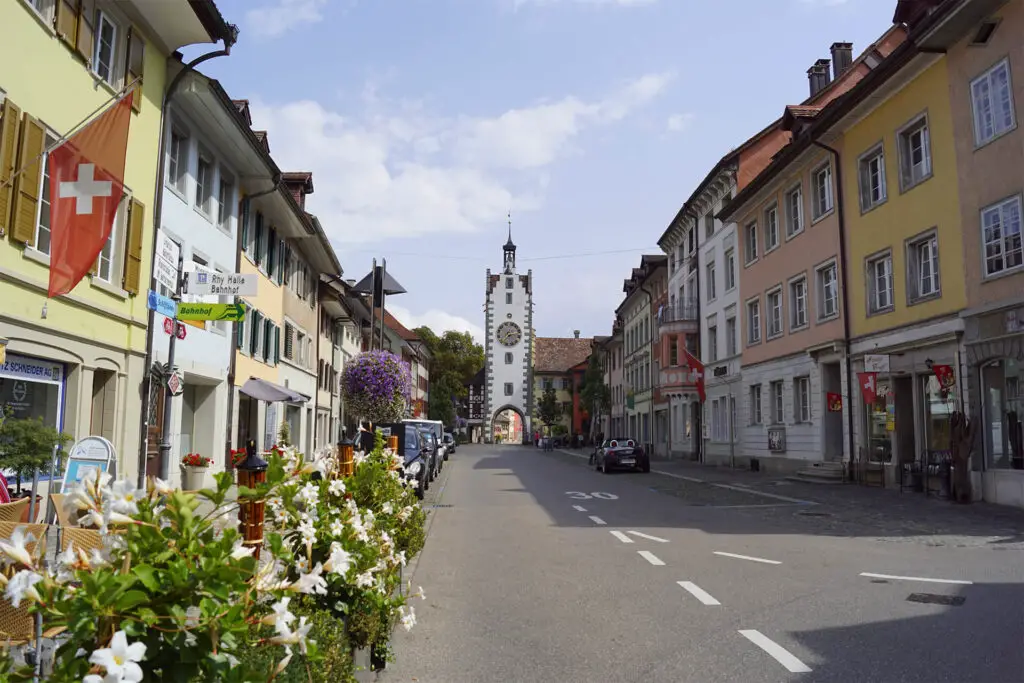
Ernen, VS
If you’re talking about picture-book Switzerland, Ernen is the place to be. Green meadows, chalet houses, the almost frightening tranquility, and the mountain glacier view would make even Goethe write a poem here.
Ernen also calls itself the village of music. Classical concerts are held here every summer, attracting artists and visitors from all over the world. What’s better than beautiful concerts combined with this panorama?
It is worth spending a night in Ernen or walking to the neighboring Mühlebach and visiting the oldest Swiss village center built in wood. Moreover, the famous suspension bridge Goms is also located there. Are you looking for more tips? Excursions to the Binntal are worthwhile in summer for nature lovers and those seeking peace.
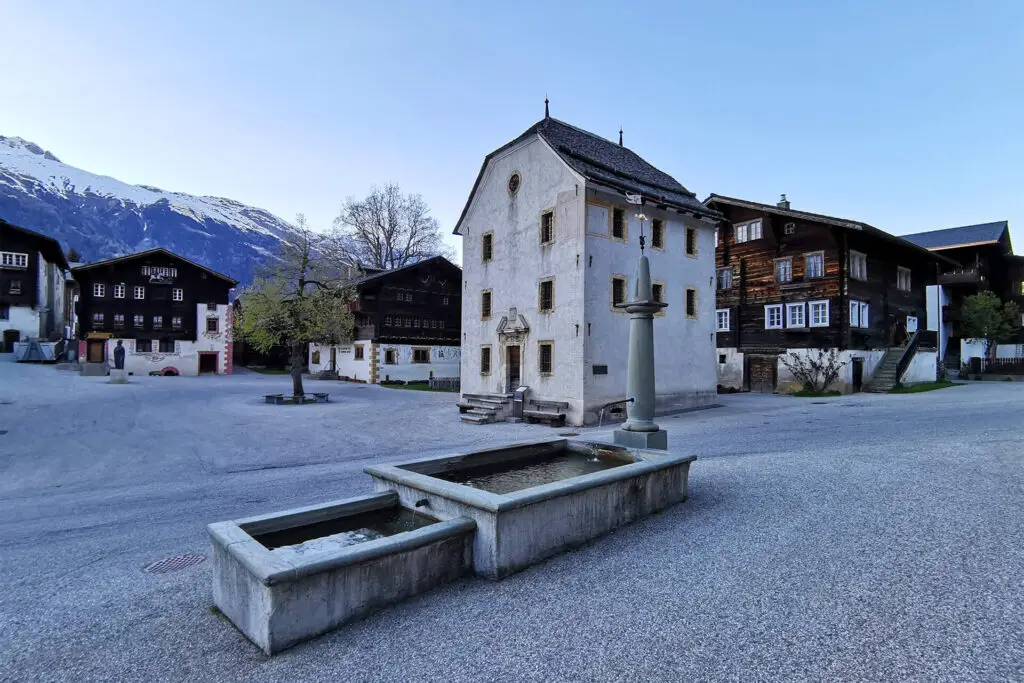
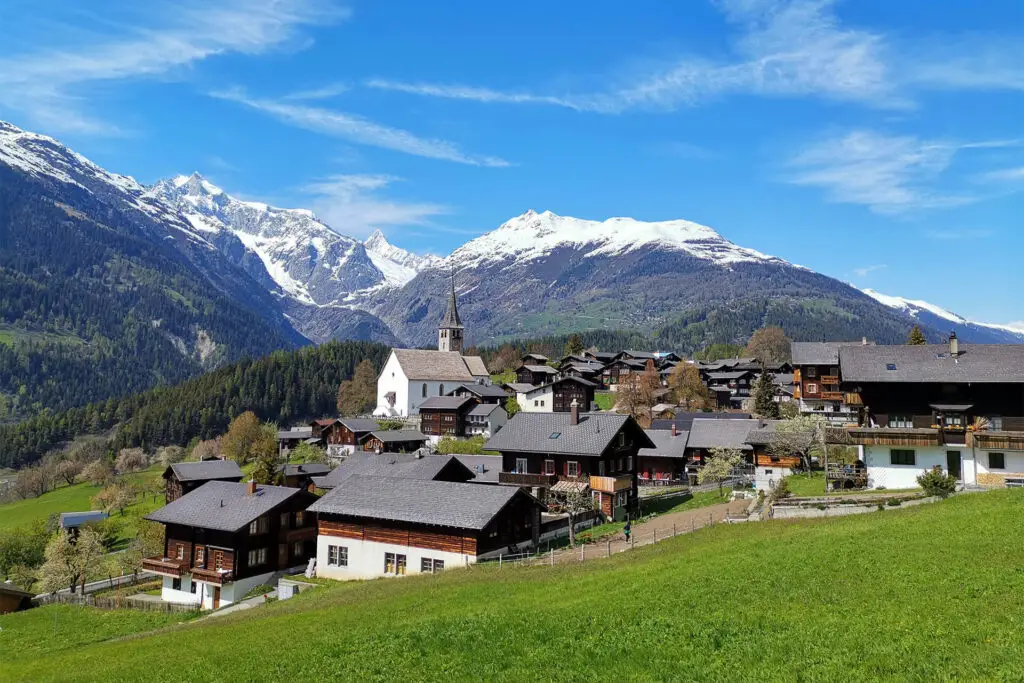
Appenzell, AI – one of the most traditional places along the Grand Tour of Switzerland
Although Appenzell is the capital of the canton of Appenzell, it is surprisingly a village and not a city. Once you arrive here, you feel like you are in a fairy tale world. Colorfully painted houses, unique architecture, various traditional bakeries, and a charm you won’t find anywhere else. Appenzell is a place for dreamers and a must-see on the Grand Tour of Switzerland. I especially fell in love with the gnome house.
The region around Appenzell has always been very rural and traditional. The first farmhouses were built between the 12th and 14th centuries, and the church had a great influence. Farmers had to give, for example, 10% of the harvest to the church. Even today, Appenzell is still one of Switzerland’s most traditional cantons or main towns.
Very close to the village of Appenzell, you can start dreamlike hikes in the Alpstein area. How about a hike to the Äscher, the world-famous mountain inn? This can be well combined with Lake Seealpsee. Also, a scenic dream popular among Instagrammers is the hike from Hoher Kasten to Saxer Lücke and Lake Fälensee.
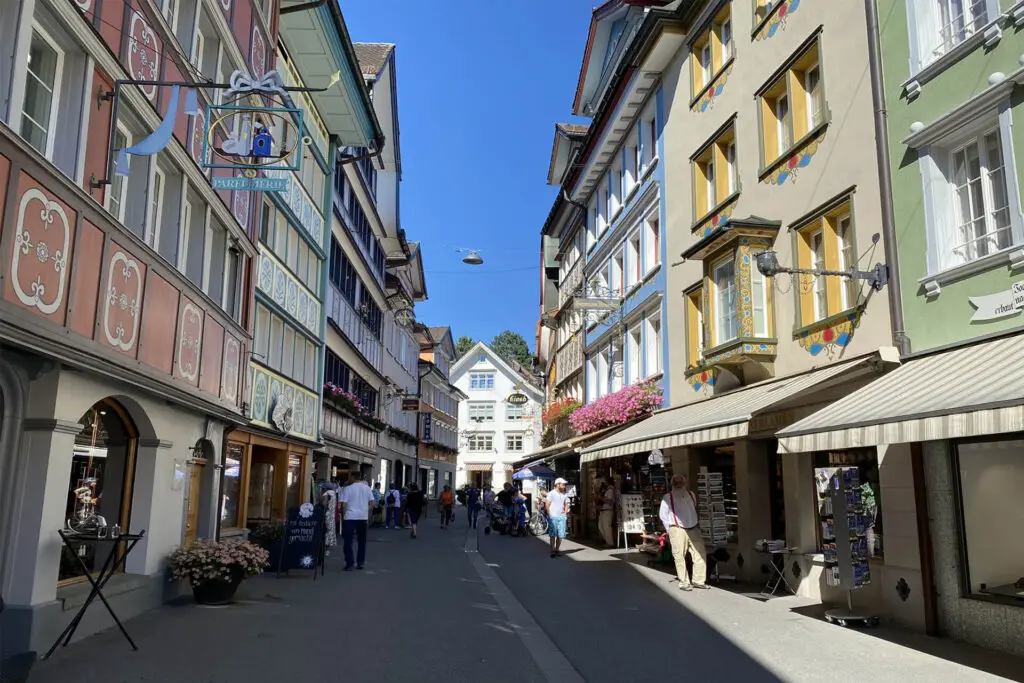
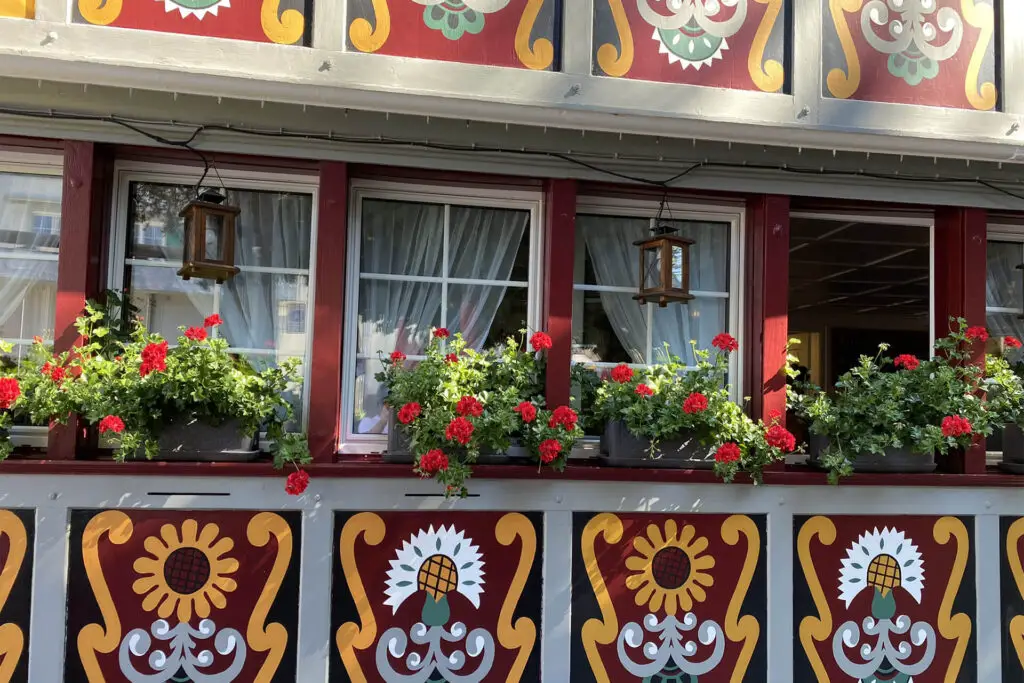
Bauen, UR
Bauen is located at Lake of Uri and invites people to enjoy a stunning mountain-lake view. Thanks to the steep slope in the background, solar energy is stored and reflected, which gives the place a nice southern flair. This can also be seen in cultivating the gardens, which have a Mediterranean flair due to the terraced buildings and southern vegetation.
Especially beautiful are the old Central Swiss farmhouses combined with the village church of Saint Idda. Especially in the early morning or late evening, there is perfect photo light in summer. I recommend walking up the slope along the official path for the perfect angle.
In summer, Bauen is also the tip for a cooling off in the Lake of Uri or a tour with the Stand Up Paddle.
Although the village used to be accessible only by boat or footpath, a road to Bauen was built in 1956 and is now one of the highlights of the Grand Tour of Switzerland in the canton of Uri.
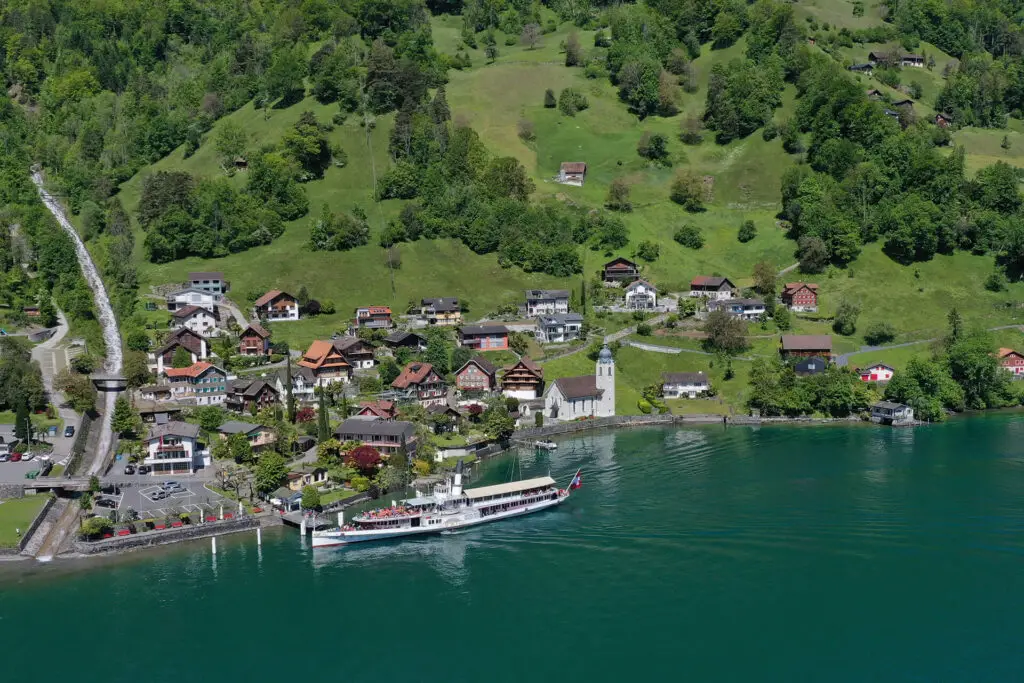
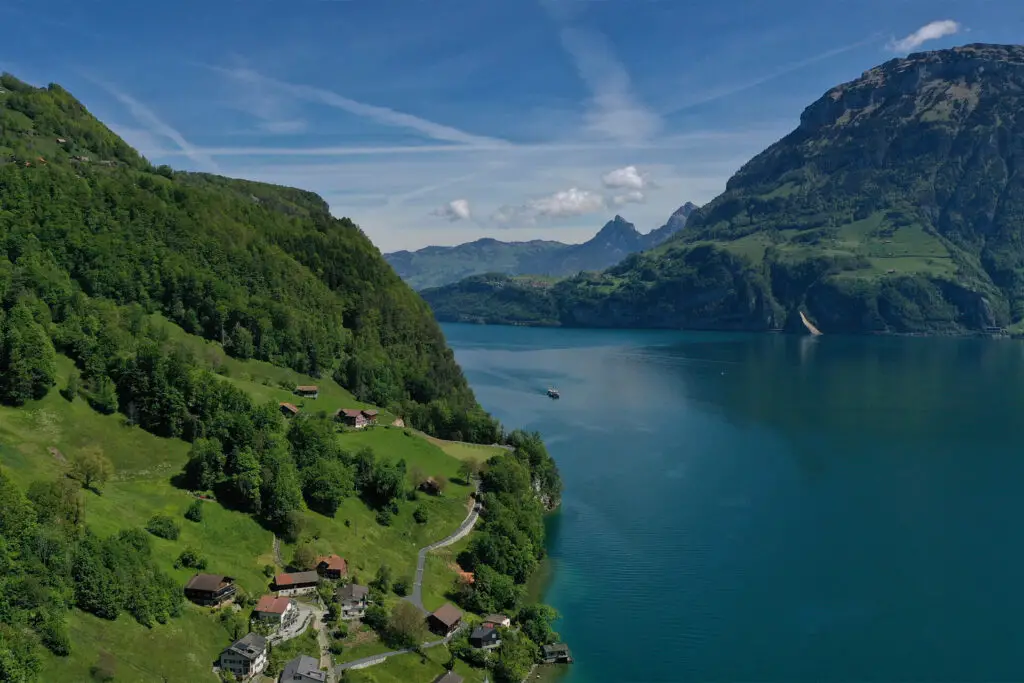
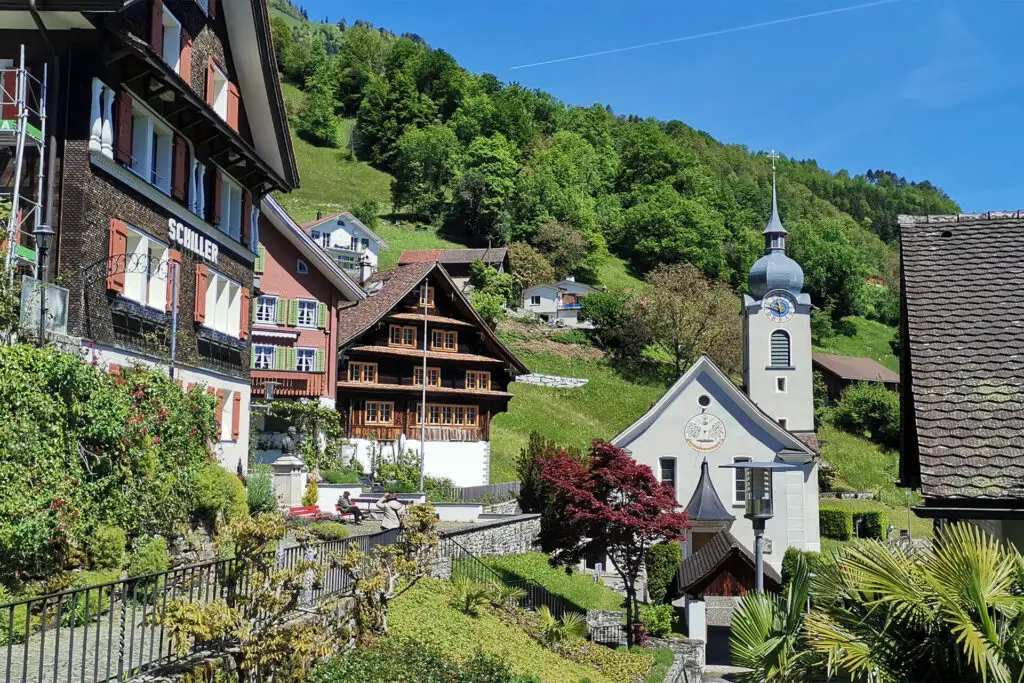
La Chaux-de-Fonds, NE – Grand Tour of Switzerland watchmaking highlight
La-Chaux-de-Fonds is one of the places along the Grand Tour of Switzerland, which has been a Unesco World Heritage Site since 2009. For over 100 years, the city was the world’s center of watchmaking. But this was not always the case. On the one hand, the region around La-Chaux-de-Fonds has a very harsh climate with an altitude of over 1000 meters (nearby is one of the coldest places in Switzerland). On the other hand, it originally had no surface water, which made settlement difficult for a long time.
Unique in La-Chaux-de-Fonds are the numerous terraced houses in which the employees of the watch factories lived. It is also the hometown of Le Corbusier, the famous architect of Art Nouveau.
Last, La Chaux-de-Fonds is an interesting contrast to the other places mentioned along the Grand Tour de Switzerland and has an exciting history.
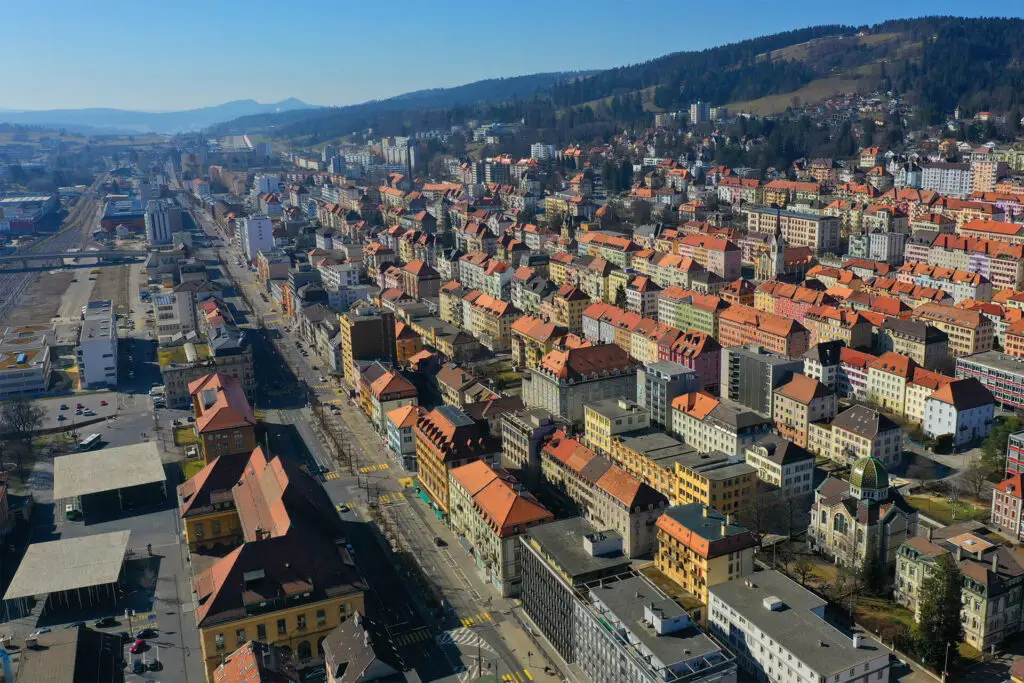
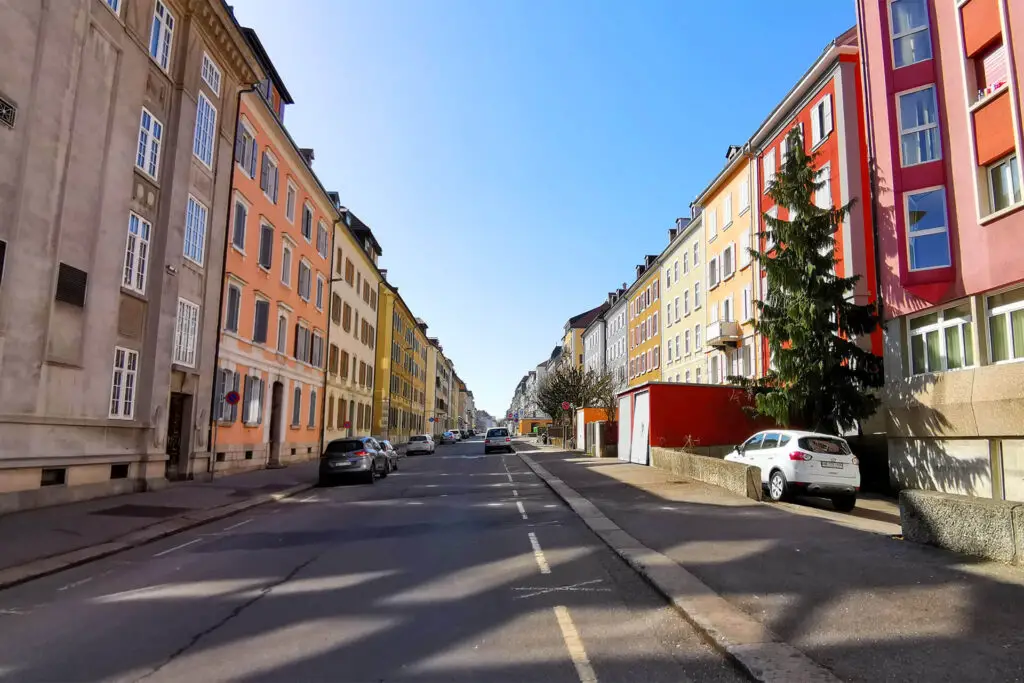
Saint-Saphorin, VD
Saint-Saphorin is the second village in this blog article, which belongs to the UNESCO World Heritage because Saint-Saphorin is located in the widely known wine region of Lavaux. The origins of wine and its terraces date back to the 11th century in the Lake Geneva area, where monasteries controlled the area and cultivated grapes.
The church was built as early as the 6th century, making Saint-Saphorin a place of historical value. Besides the exciting history, the breathtaking beauty immediately catches the eye. The historic buildings framed by the green of the vines, the blue of Lake Geneva, and the gorgeous mountains give the village a special flair. Not without reason Saint-Saphorin is one of the most beautiful villages in Switzerland. Therefore, I can only recommend stopping in the winegrowing village along the Grand Tour of Switzerland.
Furthermore, wine tastings can also be made here. If you are already in the region, walking from Saint-Saphorin to Epesses is worthwhile. Epesses is another picturesque dream village in Lavaux and wins hearts with charm and incredible views.
If you have less time, you can also drive to Epesses. Other highlights are a walk along the Montreux Riviera and a visit to the Chillon Castle.
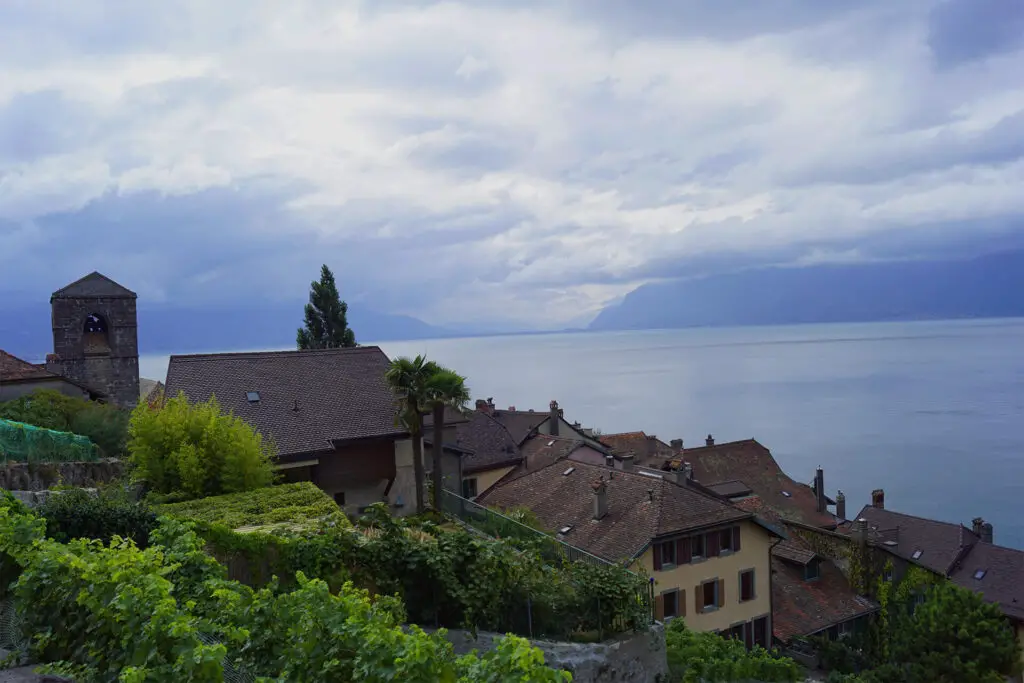
Meride, TI
Meride is certainly one of the prettiest and best-preserved medieval villages in the canton of Ticino. Visiting is almost a must through the vineyards, the dreamlike green, and the beautiful churches.
The village of Meride was home to many artists who took their art to neighboring countries such as Italy, France, and Germany. In addition to handicrafts and painting, silk art and viticulture were strong in the small Ticino village for a long time.
If you are a fan of fossils, you should not miss hiking Monte San Giorgio, a UNESCO World Heritage Site. Many fossils that are around 200 million years old have been found here.
Malans, GR
The winegrowing village of Malans is a worthwhile detour on the Grand Tour of Switzerland because of its impressive patrician houses in the center and the various winegrowers. Accordingly, winegrowing is also the most important economic sector in the village of Malans. Besides the beautiful buildings and the fruit and wine growing, the huge walls along the streets are particularly striking. By the way, Malans belongs to the Bündner Herrschaft and the beautiful villages Jenins and Fläsch.
Nationally, Malans makes headlines, especially thanks to its good floorball team (indoor hockey), whose team plays in the highest Swiss league.
One of the biggest insider tips of Malans is the Älplibahn (tickets must be reserved). Thanks to the warm climate in summer, you may be greeted by snakes. Don’t worry, they are in the stones near the restaurant and don’t do anything. From the restaurant, you can hike to the Fläscher Valley in about 2 – 2.5 hours. Three lakes with almost no people are waiting for you. A pure dream that proves once again how beautiful our Switzerland simply is.
